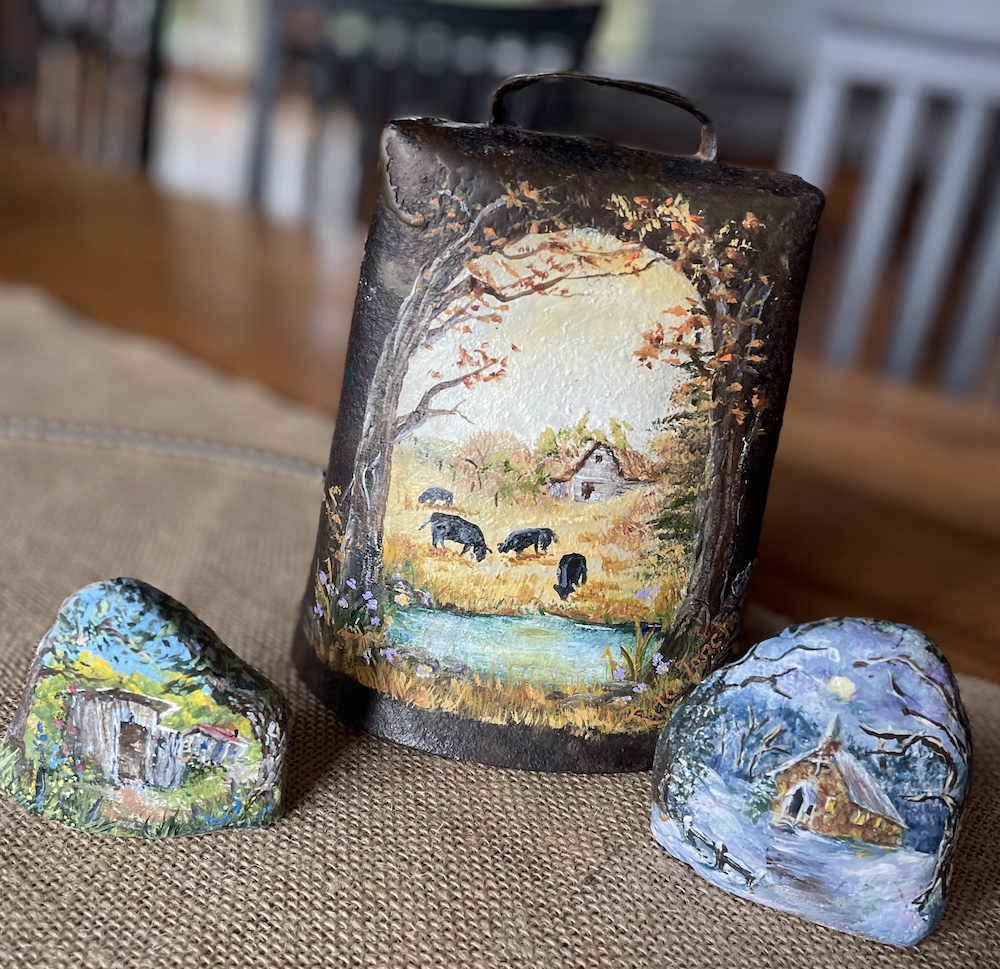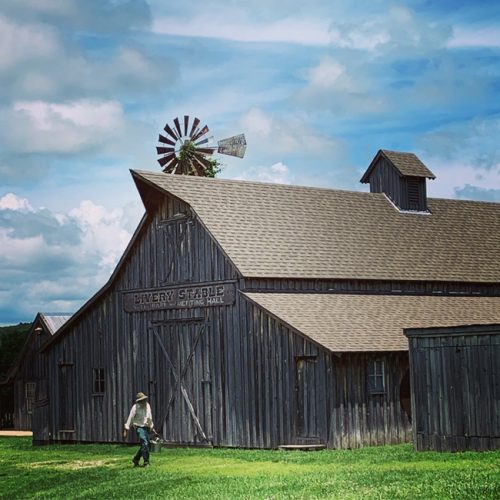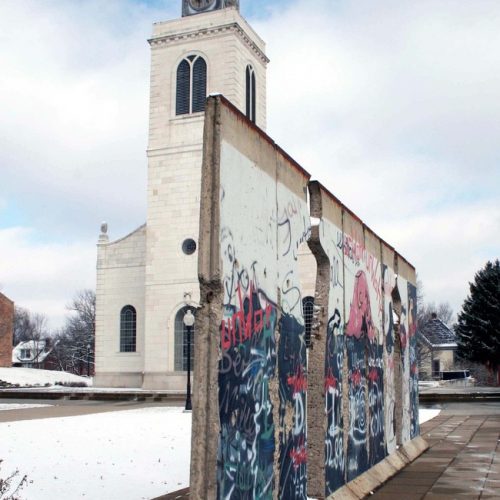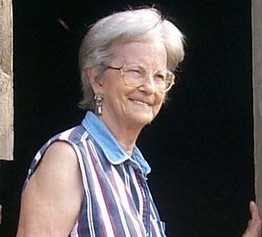I heard about Rita Fancher long before I met her. My mother-in-law was fortunate to take art lessons from Rita in Norwood, Missouri, sometime in the mid-1990s, and as a result, painted several lovely scenes that we treasure. In fact, she left us a legacy through her artwork.
My mother-in-law spoke fondly of Rita, and I could tell that not only did she teach Ginny how to paint, but also, Rita gave Ginny something to be proud of achieving.
Rita hails from England, and spent much of her childhood in bomb shelters during World War II. Her life story includes marrying a “Yank,” traveling the world with him, raising a child and becoming a respected and well-known artist in this part of the Ozarks where we live. She has influenced many people throughout the years, and volunteers her time these days at the Ava Art Guild and the local food pantry. She is a friend to and loved by many in the community. Rita also belongs to the local Episcopalian church, a building that her husband and son built.
I finally met Rita a few years ago. When I asked her if I might have the privilege of writing about her, she told me that my mother-in-law had once asked her if I might feature her someday. So, it’s gone full-circle with this interview, and this is Rita Fancher’s story. I love that my mother-in-law thought of it long before I did.
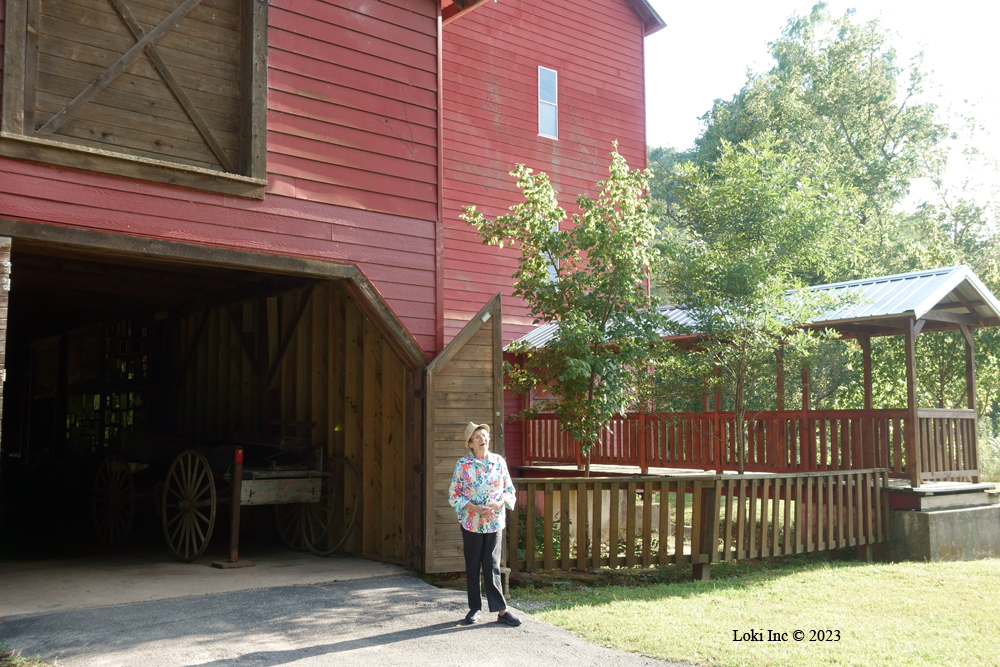
Where you born?
I was born in 1937 in London, but when I was about a year old, my parents moved out of the city to the country, to Middlesex. Then, London encroached out around us. The actual place I lived is about five miles from Heathrow. I was the eldest, with four little brothers.
What do you remember from childhood?
A lot of my memories have to do with the war. What sticks in my mind is being at school and having the sirens go off. And having the teachers say, “Walk, don’t run, walk to the shelter.” Those teachers were so calm and looking back on it, those teachers were just kids themselves! It was a neat place to grow up. We lived very close to the underground station, and so I could be in London in no time. On school holidays, my mum would usually pack up a lunch and give me and my brothers the fare, and so we’d go to London, to the West Kensington museums. To go places like the Tower of London cost money, so I didn’t usually go there.
What did you do before you got married?
I went to a secondary modern school, which is like a forerunner of a comprehensive school, like they have now. I was not a good student, so I didn’t pass my exams so I left school at 15. I worked in factories.
What type of factories?
Leaving school at 15, you join adulthood early. At first, I worked in a photo lab. That meant riding a train every day, and train fares cost money and I was paid very little. So there was a big factory just to the back of where we lived. So I went to work there, and in the evenings I had an extra job as an usherette at a movie theatre. That’s where I met my husband, George. He was stationed in the U.S. Air Force at South Ruislip, a base that was close to where I was living. He was 21 and I was 20.
My father had been telling me for years and years to “Stay away from the Yanks!” The reason my father was so against the Yanks was because a cousin of his had gotten involved with an American serviceman – and this can happen with any serviceman with any nationality – and he’d gone back to the States to be with his wife and family and left her.
So, night after night, George would watch the same old movie so that he could walk me home! Eventually, I took George home and introduced him. And every night, my dad would say to him, “How are you, George? How’s the wife and kids?” George got tired of the joke and he gave my father a telephone number and said, “This is my commanding officer’s number. You can call him.”
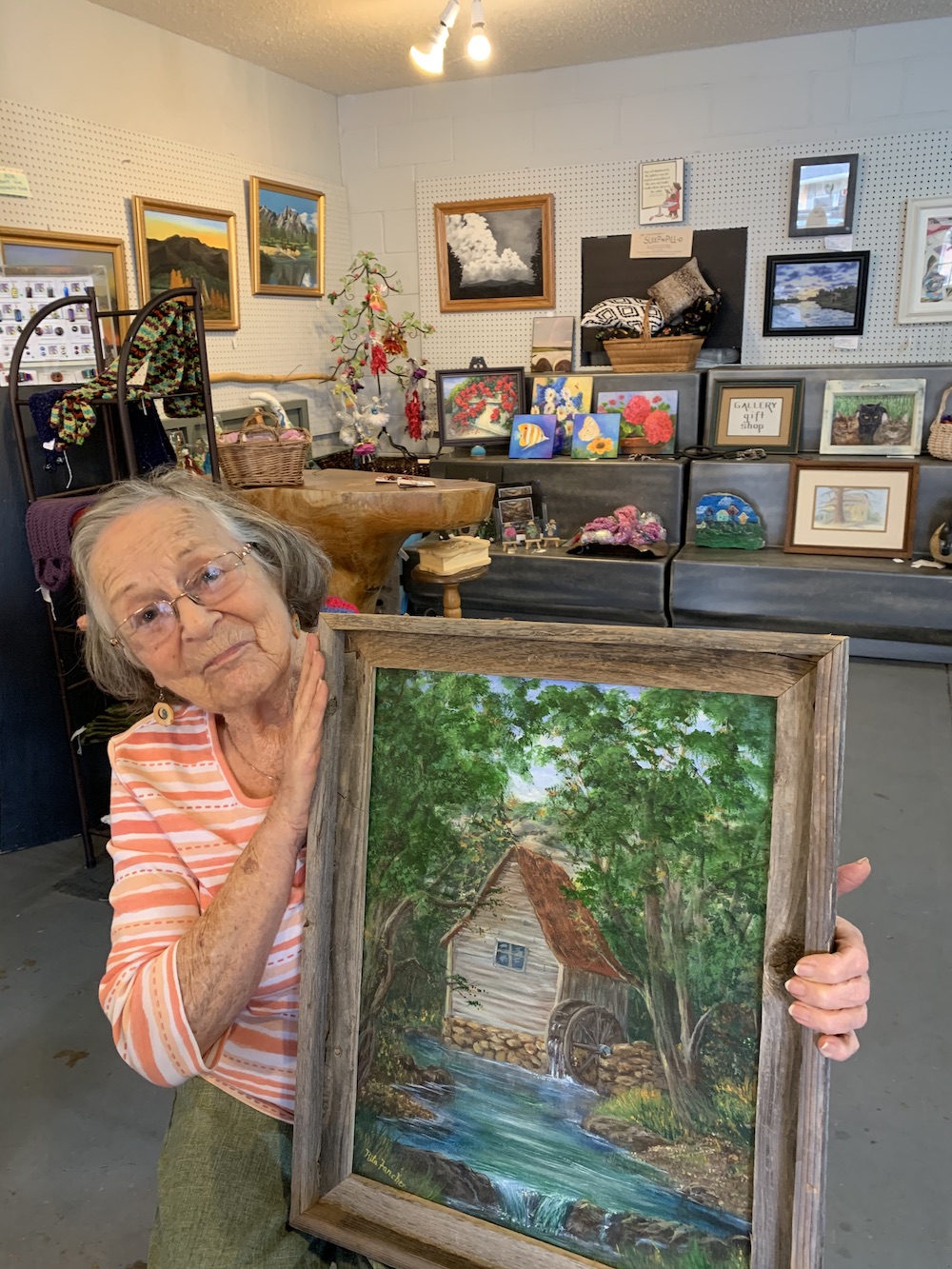
Did you do art back then?
Oh, yes. Drawing and sketching, and my father was an artist, too. He was a blacksmith, and it was very hard work. He used to encourage me with my drawing.
What I was doing with my creative outlet early on was cake decorating – later, when George and I lived in Japan. But it got to the point where all the sugar, I felt like I was absorbing it through my skin. People told me what they wanted and I’d say, “OK, I think I can do it.” I’d see it with my head and then I could do it with royal icing. … I loved to make baskets and roses.
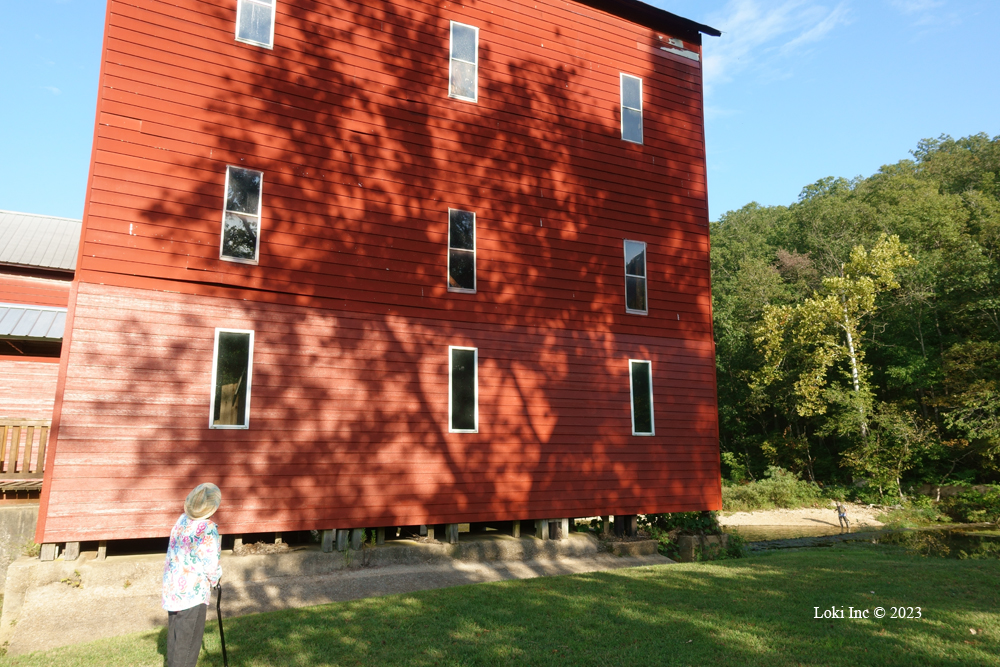
Tell me about your experiences as a military wife.
The first place I went was Carswell Air Force Base near Fort Worth, Texas. I worked in a department store in Fort Worth for about a year, and I got teased for the way I spoke. I made some good friends. Then, George got sent to Korea for an unaccompanied tour for 13 months. I went back to England, so I went to work in the wages and salaries office at this local factory where I worked before … that was interesting because that was my first experience with a computer. I would collect information that came in from the factory and transcribe it into coded cards. I enjoyed that job.
George came back from Korea and we went to Tacoma, Washington, at McChord Air Force Base (1961-1962). I loved the climate there. From there, we got sent to Pease Air Force Base, New Hampshire (1962-1964). So, we drove there.
But, the first time I came over we landed in Newark, New Jersey, and his family were living in Orange County, California, and we went by Greyhound bus and took a southerly route. That was spectacular. We did an overnight stop in Dallas, Texas.
We were in New Hampshire for about a year and a half, during the Cuban Missile Crisis. Then, he got orders for Japan, so I took out American citizenship in Boston, because I was told that it would expedite my being able to travel with him. We went by road back to California, and we took the southwest route and saw the pueblos and Navajo country.
We were in Japan for almost five years. While there, I volunteered with the Red Cross and met with Japanese students to help with conversational English. I took a secretarial course – was a whiz at shorthand, couldn’t type worth a darn. I also learned cake decorating.
Eric was born in 1968. Japan was my only experience living in military housing. Actually was a bit disappointed not to be living off-base. We lived in what had, during WWII, been a Japanese aircraft factory – now converted to an apartment complex, housing a few hundred American military families. In addition to apartments, the compound consisted of a medical dispensary, post office, two chapels, commissary, BX, cafeteria, Officer and NCO Clubs. Most of the military personnel commuted to Fuchu Air Station or Tachikawa Air Force Base.
I enjoyed Japan. We were just outside Tokyo, near a station in the Chuo subway line. Once I learned a bit of Japanese, I was off exploring.
Actually, I didn’t need much Japanese, as there were many people easer to practice their English, which at that time was taught as a rather abstract subject. (George liked to go to Akihabarah a Tokyo district comprised mainly of electronics dealers.)
Then, we came back and then it was Altus, Oklahoma, for a year. While there, I obtained a driver’s license. I got involved briefly in amateur dramatics.
Then, George got orders for a 15-month unaccompanied tour to Turkey. By then, we had a son, and he was little. I didn’t fancy spending that time with my in-laws. So, I took Eric and went back to England (1970). Eric and I stayed with my family, who by then had moved out of London to the fen country of Norfolk. Seems I spent most of that time weeding strawberry beds and picking strawberries. The brothers had grown into pretty nice people. Two were married, with children, so I got to meet nieces and nephews.
From there, we went to Sumter, South Carolina (1971-1972). While there, I volunteered at Head Start, and was able to take Eric with me and he began to lose his English accent, developing quite a South Carolinian drawl.
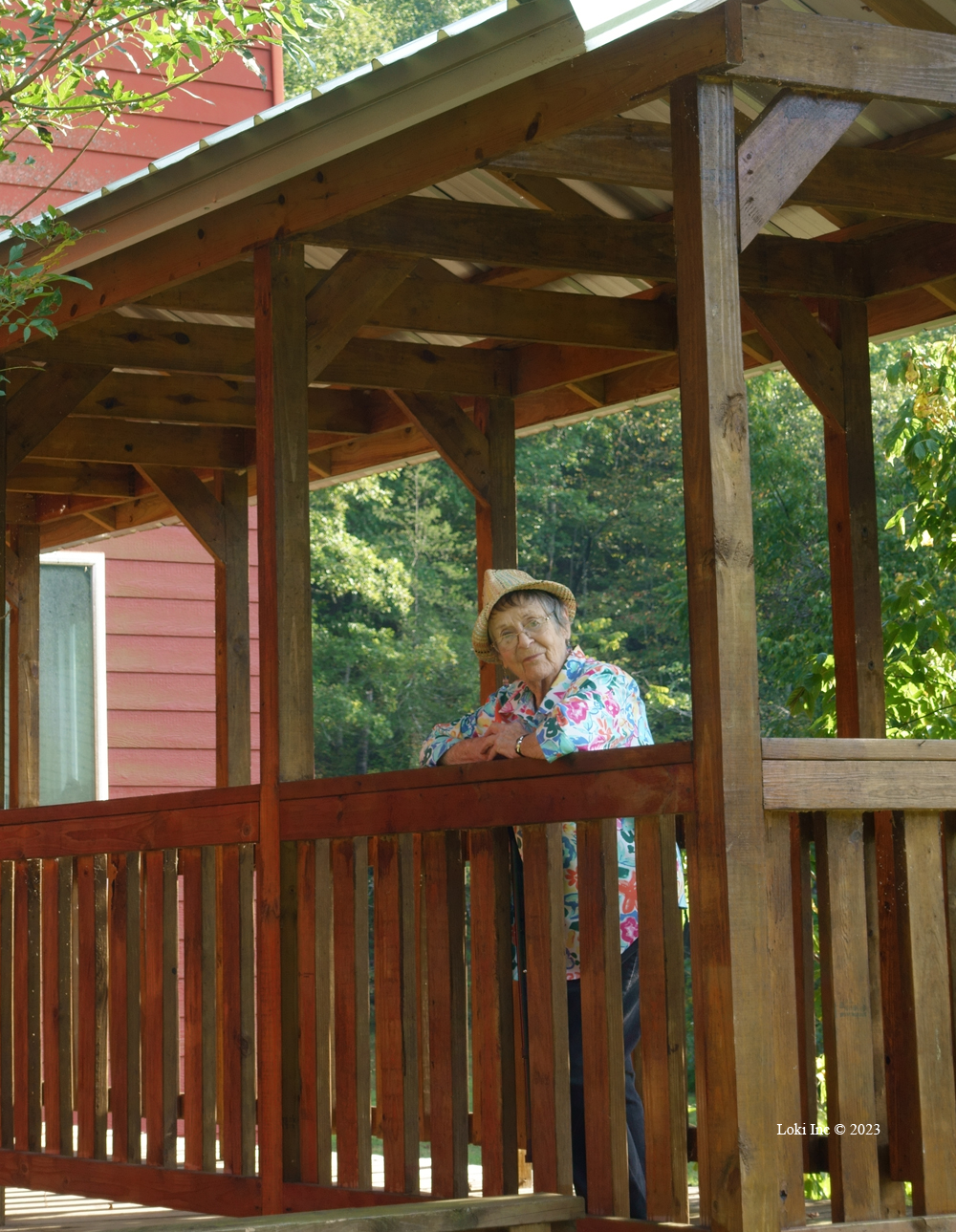
And then, George got orders to Mallorca to a mountaintop radar site. I wasn’t supposed to go. So, I went back to England! Then, I got a phone call from George and he said he’d rented an apartment, and I made a way down there. The apartment he rented was in the Port de Soller, on the southeastern edge of the island, situated in an old villa, on the second floor. There was a balcony out front, overlooking the bay and the old port. The windows at the back of the apartment gave us a glorious view of the mountains, with the old market town of Soller nestled at the foot. George would drive daily from our home at sea level to his workplace at the top of the Puig Mayor, the tallest mountain on the island – quite an exciting zig-zag course.
Eric, then aged 4, attended a kindergarten under the auspices of a convent. The space outside our apartment was kind of a cab bank, but drawn up in it were the horse-drawn vehicles that conveyed tourists around the gorgeous surrounding countryside. We made friends with the drivers, and sometimes, if there were spare seats in the conveyance, we’d be invited to ride along, for free.
We lived on the economy, which was a wonderful experience. Once the local people realized we were not tourists and we’d be around for a while, prices dropped and things got cheaper.
After Mallorca, we went to McClellan Air Force Base, outside of Sacramento, California (1973-1974). I attended evening classes in bookkeeping and accounting for a while, and also helped with reading in Eric’s class. Sadly, George’s mother suffered a severe stroke, and when she was able to travel, George drove back to Missouri to fetch her, and she stayed with us for five months.
By then, I was tired of my home going into storage. George had been trying – ever since we left England – to get an assignment in England, and he got everything but. So I said, “You’re coming up on your 20th year, please put in for retirement.” George said, “How about this? Bentwaters Air Force Base, Suffolk, England!” We were there for five years, from August 1974 to May 1979.
While there, we lived in a two-story brick cottage, situated between the villages of Bawdsey and Alderton. Bawdsey Manor had an interesting history, as that’s where radar was developed. It captured a lot of enemy interest, and there was evidence of coastal defense. There was a WWII gun placement in our backyard, and another in a field across the road. In fact, Eric and a friend, whole playing the edge of that field, uncovered an unexploded bomb! RAF disposal told us that it was a shell fired from a ship, and contained 11 pounds of explosive materials. While there, I helped with Cub Scouts, and drove for Meals on Wheels – a lovely job as it gave me an excuse to drive around country lands and through the beautiful Suffolk countryside.
The first time I left England, it was an adventure. The second time, it was tough.
We came back for one year, to Omaha, Nebraska (1979-1980). I spent most of that year moping and being homesick. Poor Eric. Poor George.
How did you find your way to the Ozarks?
Sometime in the 1960s, we bought a piece of property near Norwood, Missouri. George’s mom property-shopped on our behalf. George wanted to buy property for his parents and he gave them enough money to buy a couple of cows; that was in 1966. We came back from Japan in 1969. I saw the place and said to George, “It’s just an investment, right?”
June 1980 – George retires from the Air Force. And so, we were down there in the holler for 28 years. He built an earth shelter house. He had concrete poured into the side of the hill. He wanted to go totally underground, but I said no. I’d spent enough time there in bomb shelters, no thank you! We tried the homestead thing – kept chickens, had milk goats, gardened, canned, etc. Then, came the personal computers, which captured George’s interest and I got into painting.
We had beautiful views, down to the creek. After spending a year looking at different houses, we moved to where I live now on three acres outside of Ava. I have a studio. I love the Ozarks now, but it was a tough adjustment.
Why was it a tough adjustment?
The people are very friendly – after a point. My English (background) helped me quite a lot. With Eric, it didn’t. He’d been going to English schools, and at that point, he had to learn to be polite to English teachers, so the teachers here thought he was great, but the kids didn’t. With the service, kids are used to be newcomers, and you’re with people who are in the same situation. Here, it was like all these clans.
One time, there was a car accident on C Highway, and my husband and son were in that accident. Eric was taken to a hospital in Springfield, and at that time, I saw a different aspect of people. They were absolutely marvelous. Joyce Creemer, especially; she was the principal of the school in Norwood, and an artist.
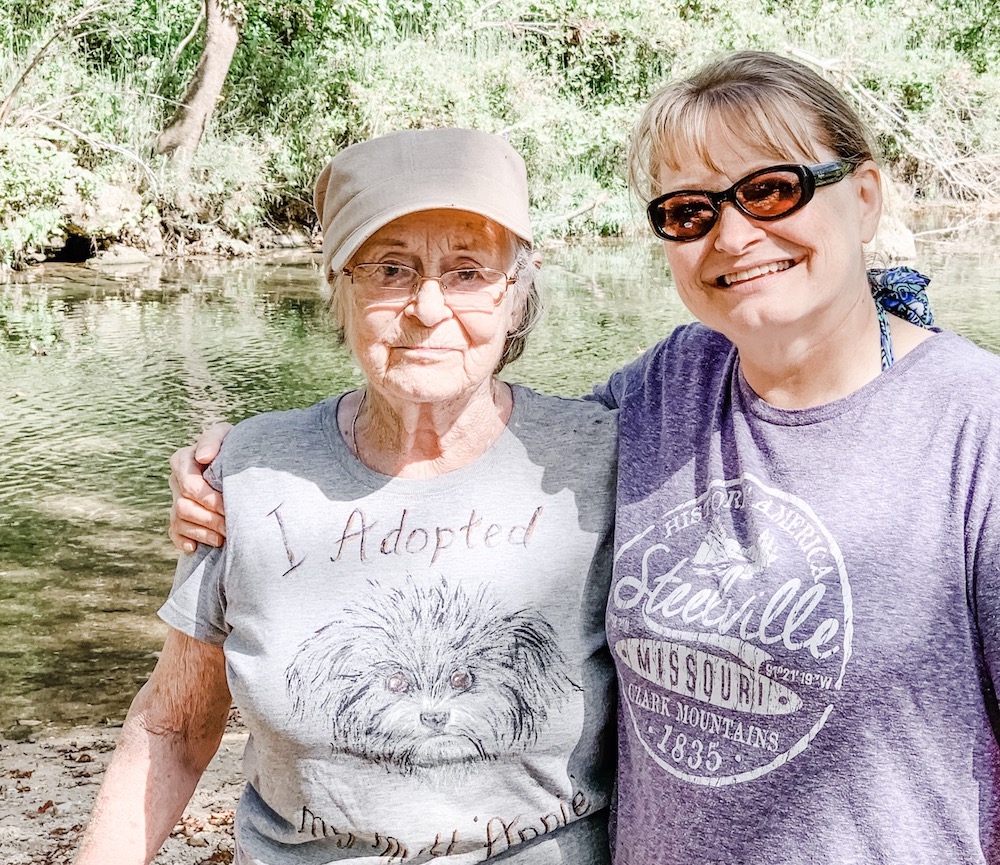
Let’s talk about your art. How did it go to from cake decorating to painting?
I still enjoyed sketching. When we moved here, I became the secretary of the PTA. I would be listening and doodling. Joyce said to me once, “You’re quite an artist!” So, Joyce got me involved, she asked me to help her with a gifted drawing class for students at school. She gave me a drawing assignment. One class, she looked at the children’s feet and when she found a pair of really beat-up sneakers, she had the kid take them off and put them up on the table, and had the kids draw them. And she looked at me and said, “And you, too!” She then asked me if I had access to an old building or cabin or barn (to draw).
And that’s where we went from there … she left Norwood, and I was looking for a drawing teacher, and I couldn’t find one. Some friends and I had gone swimming in a creek, and after swimming we decided to go into Hartville and have coffee, and they were advertising oil-painting lessons. My son had just gone into the Army then, and it was like, this door closed and another one opened.
My husband was an electronics technician in the Air Force, and by that time, he found computers and continued gardening.
I continued going to all-day weekly classes. I think back to that teacher and I wish that I could talk to her today, and I realize what a marvelous person she was. Her name was Jan and she lived in Conway. I liked painting.
In 1989, the Ava Art Guild was having a show, and at that time they didn’t have their own building. I had this painting I really liked … I took it into this show and I thought they would fall over laughing. I got a phone call from a friend in Ava who had gone to the opening of the show and he said, “I think you need to come down and look at your painting. It has a very significant ribbon.” It got “best of show!” It was of a water mill.
That gave me encouragement. I was also getting encouragement from Joyce in Springfield, and she wanted to know what I was doing. Then, Angie Richardson, who managed the Wright County Library in Norwood, asked me one day if I could teach her to paint. I had been at Farmer’s Day with my paintings. It kind of went from there, and I eventually rented a place at the end of that old building (current post office) in Norwood and taught.
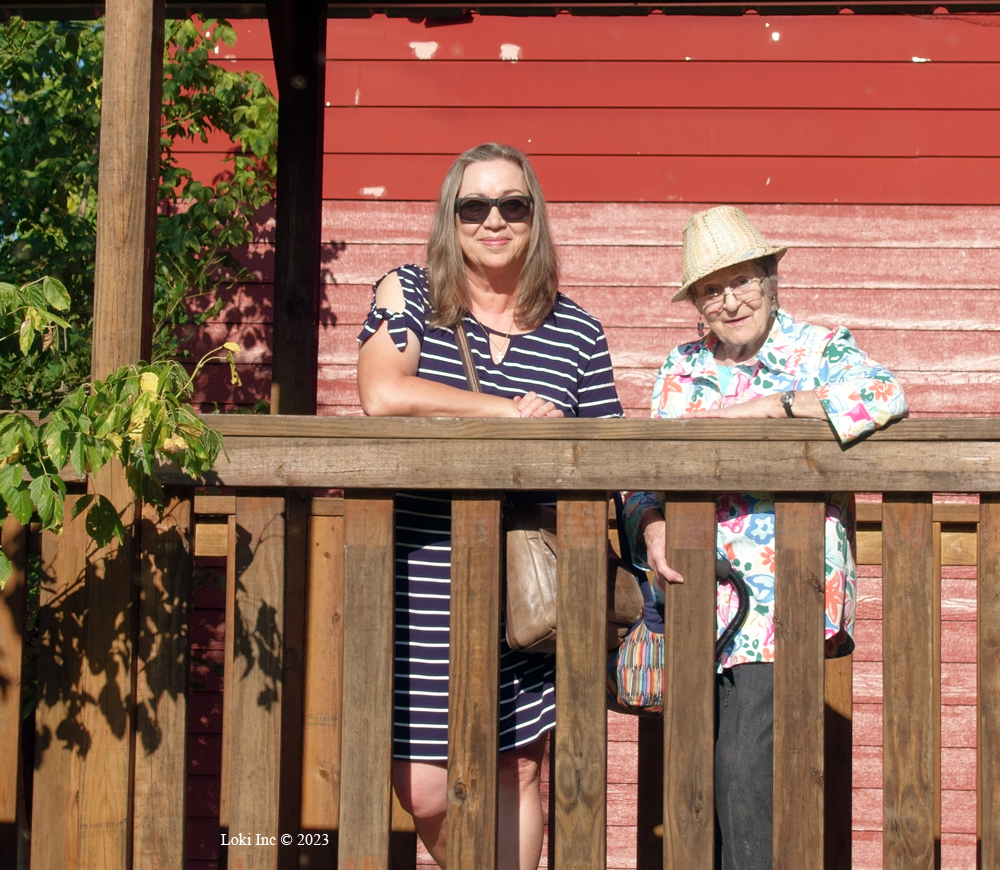
My mother-in-law took art classes from you, and it changed her life! Why was that?
I’ve seen that happen to other people. There was another lady, very disabled and very old, and she came and she would paint. Sometimes I’d go fetch her, but in the end, it was easier for me to go to her house. I would set up her pallet … After she passed, I got the most beautiful letter from her daughter that read, “Thank you, you gave my mother something to be proud of her in old age.”
I say to people, “If you can’t paint a picture without me standing over you, I haven’t done my job.”
I never thought of being an art teacher, but want to say that it brought some great friendships into my life.
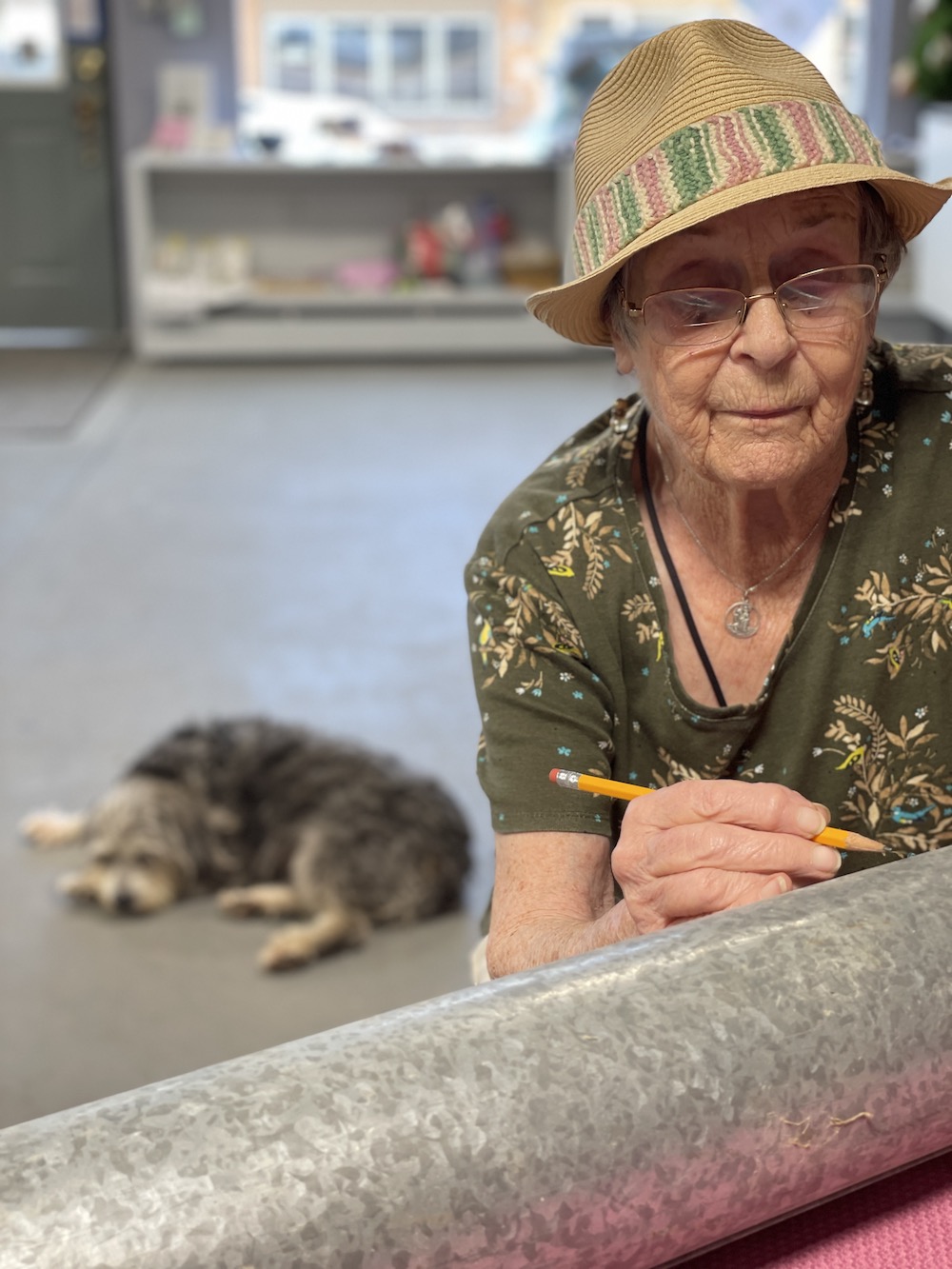
More About the Ava Art Guild …
A woman purchased a premises on the Ava square where she and her sister sold antiques and collectibles, and since she was also an artist, the store carried an extensive range of art supplies. That’s how I learned about the Art Guild. Shortly after, that woman enabled the Guild to buy the half building on East Washington. With the help of various grants, and expanding membership, the Guild eventually paid off the mortgage. I think owning our own building is a big factor in The Guild continuation growth. When I first saw that building, it was the hardware store but it had been some type of a car dealership.
Let’s talk about your rock painting!
Well, I love rocks. When we lived in Norwood, I laid down some pathways, and with George’s help, I built some rock walls – which I found fascinating. I found some fairly smooth rocks and I loved to paint landscapes. It takes me very little effort. I did a few of those and put them up for sale at various places. And then the president of the Art Guild called me and asked me if I’d do a workshop. I was plumb terrified. It went on from there. Five years later, I was president for a year.
Oils on rocks don’t work, so that’s when I started using acrylics.
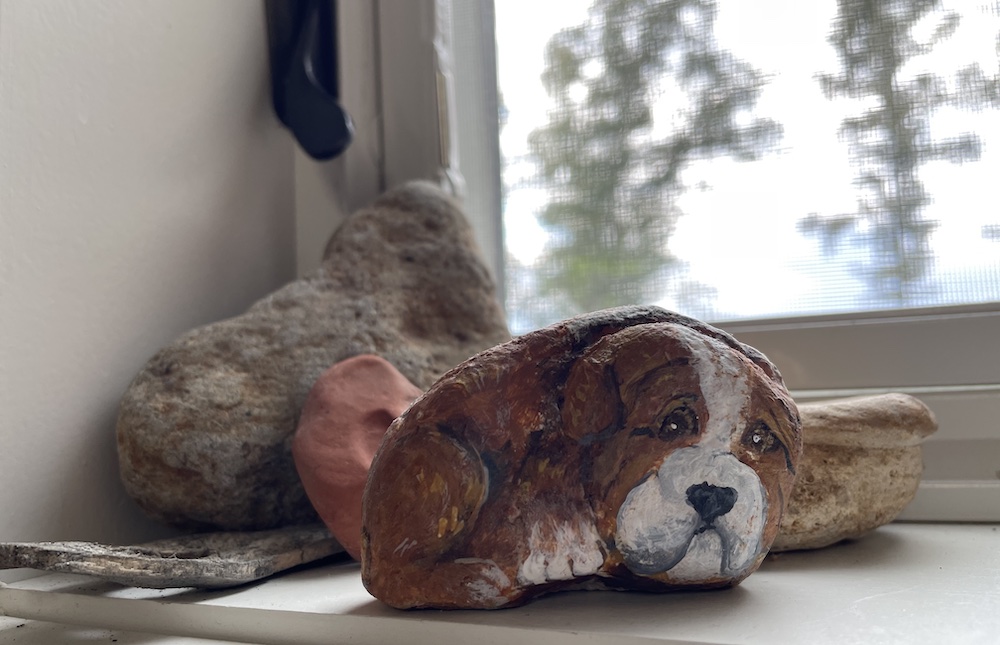
When I was with you at a creek, you picked up a rock and said, “This looks like a bulldog!” And you painted a rock to look just like one. I think sculptors are like that with rocks. Is that how you are … do you see the things in rocks that you paint?
Kind of … I look at things and I see different things.
What are your favorite pieces that you’ve done?
I enjoy what I’m doing at the time. And if other people get enjoyment out of it, well, I’ve probably given away as much as I’ve sold.
What is something that you’d like to accomplish?
Watercolor – I’d like to get confident with and competent. I’d like to get that great big long six-foot sawblade out of the shed, get it cleaned up and paint on it. It would have to be the four seasons, with an extended landscape.
If you’re interested in commissioning Rita Fancher for landscape art, please contact her through the Ava Art Guild.
